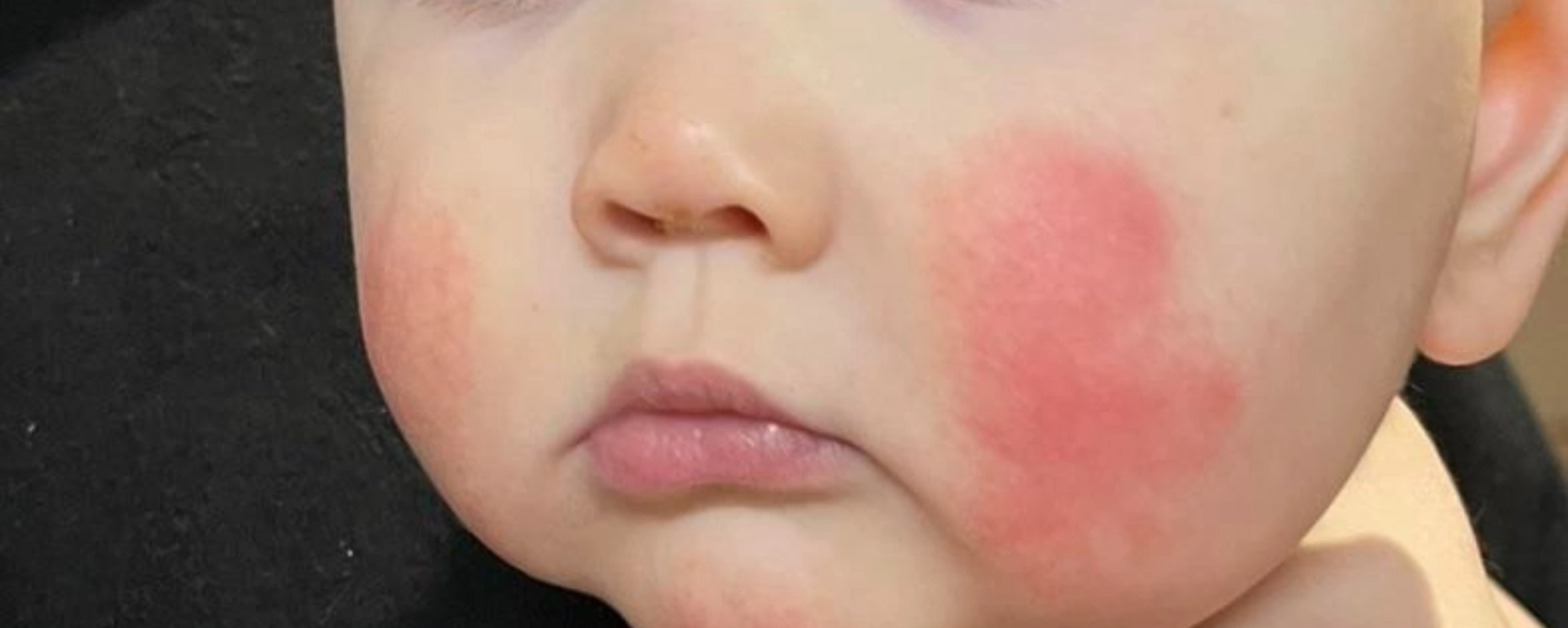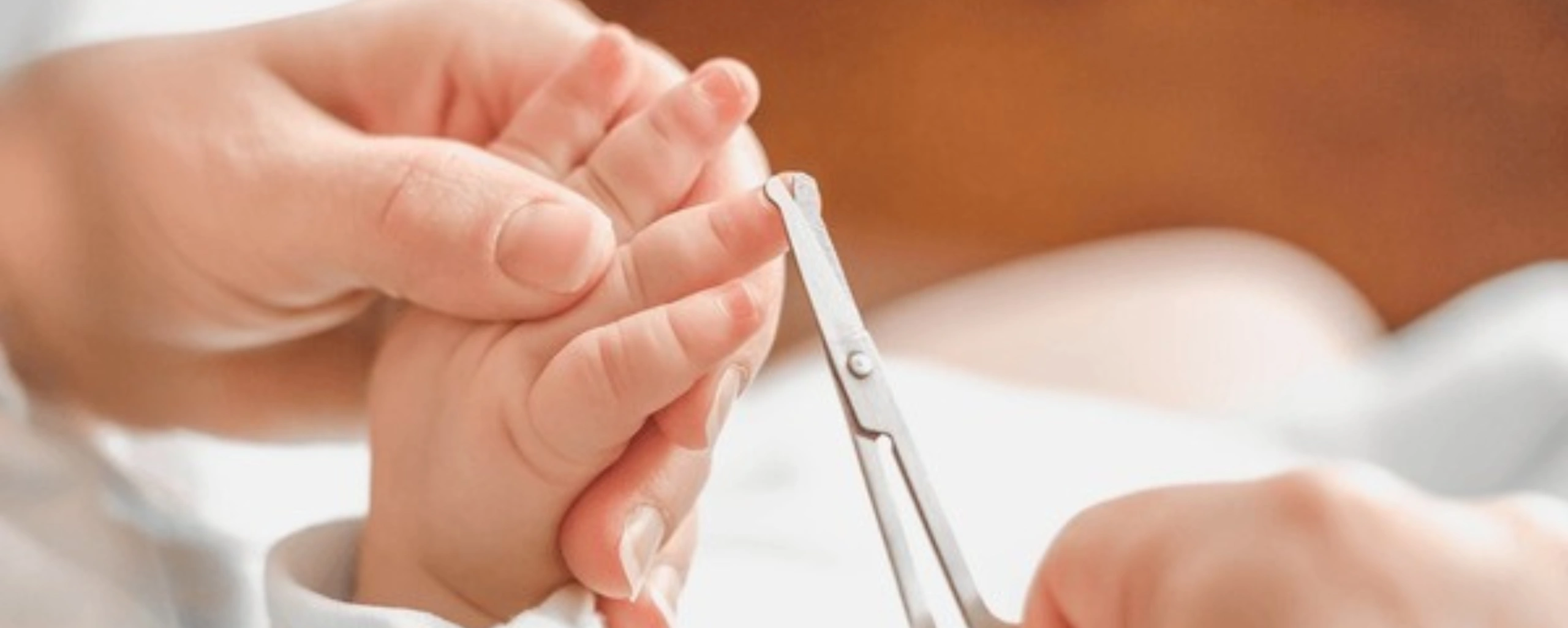Why Are My Babie's Cheek So Red?
Babies skin is thinner and more sensitive than an adult’s skin. They often react to the slightest change in their diet or environment and their cheeks respond by becoming bright red. Sometimes, red cheeks are a completely normal symptom of healthy skin, however, they can also be a symptom of other conditions. Teething, eczema and viral infections can cause the cheeks to appear red and inflammed. Generally, if a child is sick, they have other symptoms as well as red cheeks. An elevated temperature is a common symptom when a child is sick.
Are you feeling cold?
In the absence of other worrying symptoms and if the baby appears healthy and well, red cheeks are often caused by temperature changes. During winter when the air is cooler and there is less moisture, cheeks tend to become red and can appear dry. Because they are a prominent feature of the baby’s face, cheeks are also more likely to come in contact with surfaces such as bed linen. Friction and rubbing tends to exacerbate cheek redness. Often, babies with red cheeks also have red nose and chin, especially if the redness is being caused by friction.
Exposure to some foods, particularly slightly acidic fruits and vegetables, can cause the redness to become more intense.
Often, red cheeks appear less intense when a baby wakes and worse after they are bathed.
Red cheeks caused by cold weather usually improve with moisturising. Creating a barrier between the skin and the cold, dry air helps to prevent the facial skin from becoming irritated and drying out.
12 Ways to manage your baby’s red cheeks.
It’s important to be sure your baby is healthy and well before assuming their red cheeks are simply due to the cold weather. If they have an elevated temperature, a rash, are vomiting or appear sick, then it’s important to have your baby checked by a doctor. If, however, they seem fine and their only symptom is red cheeks, then it’s probably safe to treat their cheeks with a protective, moisturising cream.
Consider changing the laundry detergent you’re using in your baby’s clothes and cot linen. Often, detergents which are labelled ‘For Sensitive Skin” or which have no perfumes added are a better option.
Flannelette, cotton cot sheets can be softer against the face and skin. If your baby tends to vomit, change their cot linen daily as this will help to avoid irritation from acidic vomit patches.
Avoid going out in the weather with your baby, especially if it’s windy and very cold. Try to protect your baby’s skin from temperature fluctuations. Use a (safe) cot cover if you’re outside with your baby in their pram.
It’s still possible for skin to burn during winter, when the sun’s rays are just as dangerous. Ideally, keep your baby out of the sun but if you need to use sunblock, choose one which is specially formulated for baby/child skin.
Apply a good quality moisturising cream or lotion on your baby’s skin. The best time to apply creams is straight after drying a baby’s skin. In winter especially, some creams can be very thick and difficult to apply. Warm the cream between your fingers before smearing it onto your baby’s skin. Reapply frequently, especially after bathing.
Use soft, damp cotton pads with warm water to wash your baby’s face. Avoid using baby wipes which contain irritants.
After bathing and when drying your baby’s skin pat their skin dry, don’t rub.
Gently wipe your baby’s face after they’ve eaten and clean their face with plain water.
Be mindful that ‘dry heat’ from oil heaters and air- conditioners can cause skin to become more irritated.
Keep your baby’s fingernails cut and avoid sharp edges. If they are feeling skin irritation, they’re likely to scratch their face. Use mittens if they’re young and will keep them on.
Avoid bathing your baby in very warm water - instead, use comfortably warm water. Keep baths/showers prompt and avoid your baby having long, soaking baths.
If your baby’s red cheeks don’t improve after few days of moisturising and protection, there may be benefits in having them checked by a doctor. Many skin conditions respond quickly to specific creams and ointments. Sometimes steroid creams are prescribed to thin the skin and relieve irritation
Parents are often amazed at the size of their new baby’s finger and toenails. These tiny little deposits of hardened protein or ‘keratin’ can seem impossibly small, but also long, especially when a baby is overdue. They can also appear translucent or pink, like little shells attached to the ends of their fingers and toes.
What’s the point of fingernails and toenails?
Fingernails and toenails serve an important purpose, especially when we consider our evolutionary past. All primates have fingernails - a variation from claws, though as our mammal ancestors evolved, fingernails took the place of claws. Even in newborns, nails help to grip, boost finger sensitivity and protect their fingertips. As adults, fingernails can be another way to display our style and fashion preferences. But for babies, fingernails and toenails are purely about function.
How do I cut my baby’s fingernails?
You don’t need to do anything special, though their nails may need trimming when they get long and sharp. Young babies can’t control their hand movements and can easily scratch their face. The best time to cut their nails can be after a bath, when they’re sleeping or feeding and when you have plenty of light.
Ask someone to help you, or to keep your baby distracted. Baby’s nails can be almost transparent and it’s easy to cut the skin around the nail edge.
Use baby nail scissors or a purpose designed nail trimmer with blunt, rounded tips.
Gently pull your baby’s finger pad away from their nail before cutting.
Cut only the free edge of the nail. This is the white part at the end of the body of the nail.
Trim their nails straight across to prevent them growing inwards.
You could also use a nail file or emery board, but keep this just for your baby’s nails.
Some parents choose to bite their baby’s nails however, it’s more precise and hygienic to use baby nail scissors, or a nail file to do the job.
How do I cut my baby’s toenails?
Toenails grow much more slowly than fingernails. You won’t need to trim your baby’s toenails as often as you do their fingernails.
Toenails can grow flat on the nail plate which can make it hard to cut the nail.
Toenails can appear almost translucent and it can be hard to see the free nail edge which needs cutting. If in doubt, don’t cut their toenails and just leave them to grow until it’s obvious they need cutting.
5 top nail tips
Cut, trim or file your baby’s nails when they get long or sharp. Individual nails can grow at different rates, you may not to cut all of their nails at the same time.
Ask someone to help you when you’re trimming your baby’s nails and make sure you have good light.
Only cut or trim the free edge of the finger or toe nail which is not part of the body of the nail.
If you’re in doubt that a nail needs cutting, leave it to grow a little longer.
Cut your baby’s nails when they’re sleeping, drowsy or feeding. This is when they’re most likely to be relaxed and will hold their hand/feet still.
Written for GAIA by Jane Barry, Midwife and Child Health Nurse, May 2022.


